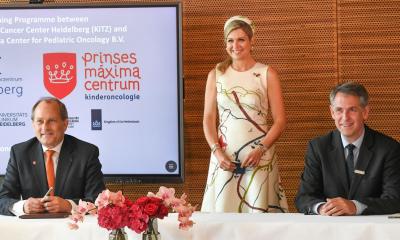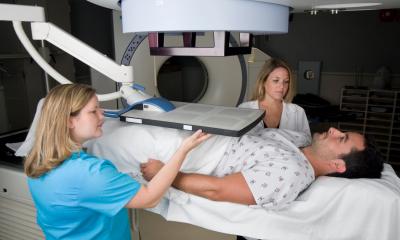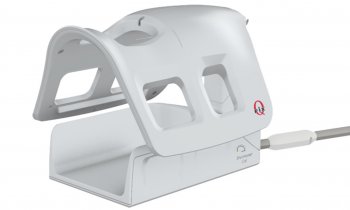Collaborate – or face oblivion
Radiologists need to change the way they practice medicine
Partnerships are at the top of the agenda for RSNA 2013. To meet current and emerging challenges, “we need internal partnerships within radiology and external ones with our clinical peers as well as with our patients,” outlined Sarah S. Donaldson, MD in her opening address of the 99th RSNA Scientific Assembly and Annual Meeting.

The 2013 RSNA president explained why those partnerships matter: “I know about the power of partnerships because I have witnessed them firsthand.” Dr Donaldson’s speciality is radiation oncology and her focus is on paediatric cancers. “I cannot imagine a more rewarding life,” she continued.
Not long ago, childhood cancer was a fatal disease, recalled the RSNA president. Back in the mid-1970s, radiation oncology was primitive; linear accelerators were in their early stages of development. There was not yet a discipline called paediatric oncology and cross-sectional imaging with CT and MRI did not exist. At that time, radiologists were generalists, training programmes were unified, “and radiologists were at the nexus of patient care,” remembered Dr Donaldson. Rounds began in the radiology suite where radiologists revealed all the clues to the biology of human disease … then, something happened: everything became more complicated, new technologies exploded. Radiologists became sub-specialized, practices turned less cohesive and less unified.
A discipline shifting apart
In order to master the new technologies, different training programmes were introduced. Therapies were split from diagnoses, “and gradually we drifted further and further apart.” The good thing was “that new technologies gave us better understanding and improved accuracy” in radiation therapy with improved cancer cure rates in the wake, added Dr Donaldson. However, patients started to show unanticipated radiation injury to normal tissue. Consequently, doses had to be reduced while cure rates needed to remain high.
In order to achieve a more precise therapy, radiation oncologists successfully formed partnerships across disciplines, including research. Results show the dramatic benefits of collaboration: “Today, more than 80 percent of children with cancer are cured of their disease using multidisciplinary risk-adapted therapy.” The challenge today is to achieve even higher cure rates with no toxicity, added Dr Donaldson.
Demanding a shift in radiology culture
Caring for children “has shown me the importance” and power of multi-disciplinary collaboration, summarized the RSNA president. It can help produce value, not volume; outcomes, not output. “We must build a new culture”, she went on to postulate “a culture that fosters partnerships with a common focus” to deliver best possible care.
According to the expert there are three levels of partnerships – internal, external, and patient-related. First, partnerships within radiology should be built. Radiologists from all subspecialties must reconnect to foster precision in diagnosis and therapy. In this context, the ongoing “natural” partnership between radiation oncology, oncological imaging, and interventional oncology has helped kill cancer cells while sparing normal tissue, claimed Dr Donaldson citing examples.
Increasing precision through team-based radiology
Images based on hybrid technologies such as PET/MR and PET/CT support this successful work in anatomic and functional diagnosis as well as in therapy, eg through simulation. Advanced imaging will help achieve precision radiology; the future, said the expert, belongs to 4D high-resolution colour images and to molecular imaging for gene expression. Integrated cancer care tailored to each patient’s needs will require cooperation, collaboration and sharing responsibility. Challenges, added Dr Donaldson, will be overcome only by team efforts.
Based on existing underpinnings, educational programmes will need to follow suit, with collaborative training revisited. This should include an enhanced interventional radiology and radiation oncology pathway, as demonstrated in the UK and in Australia.
External partnerships
Quality of care demands multi-disciplinary approaches, such as in the case of head-and-neck and lymphoma teams, with radiologists at their centre. Better coordination, cost containment and concierge care will result, said Dr Donaldson. Increased visibility is important if radiologists wish to regain an important role. “Get out of the basements and reading rooms and participate actively in multi-disciplinary tumour boards,” she urged her peers, “to be seen as equal partners, we must be at the table.” Accepting responsibility for patient care goes well beyond image presentation and rapid consultation. To be seen and valued will help radiologists become “requested physicians” rather than “assigned physicians” and will help them avoid being replaced by computer algorithms. Team-based medicine opens up new opportunities and helps broaden the expertise of radiologists, thus invigorating the discipline.
Patients want to partner with radiologists
What is to be gained by having a direct partnership with a patient? Patients like to speak with radiologists on preliminary results, claimed Dr Donaldson. This relationship has to become common practice, leading to the appreciation of the value of radiologists by patients. Patient-driven care is the new challenging reality for the discipline. A change in culture will support radiologists in strengthening their relationships with patients and make them longer lasting and more meaningful. The RSNA president presented examples from her work that demonstrated just how gratifying it can be to forge such relationships – certainly a model peers may wish to follow. This bonding with their most important partners will give radiologists the strength to meet the challenges the discipline is facing, to embrace emerging opportunities … and avoid being forgotten by clinical peers and patients.
Michael Reiter
02.12.2013











